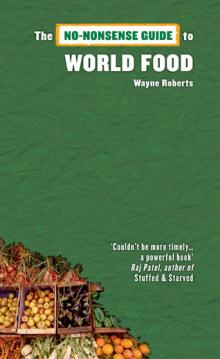Archive for April, 2012
The pictures of rotting and mouldy food in different stages of decay are engaging, repugnant and entertaining all at the same time. Curious?
Welcome to One Third – a series of portraits by Austrian photographer Klaus Pichler that reflect the culture of food waste in industrialized nations.
The name One Third refers to the amount of food that is wasted worldwide, according to a study by the Food and Agriculture Organization of the United Nations (FAO).
The 2011 study, Global Food Losses and Food Waste, revealed that 1.3 billion tons of food produced for human consumption is lost or wasted globally — roughly one third of all food produced. This means that all the resources used up to produce and transport that food are also wasted.
Where does the loss occur? Food is lost throughout the supply chain. Interestingly, where the loss occurs seems to depend on the wealth of the country.
In low-to-medium income countries, loss occurs in the early stages of the supply chain: during harvesting, storing, refrigeration and transportation.
In medium-to-high income countries (Europe, North America), food is wasted in the later stages of the supply chain: this can be due to a lack of coordination between the different players in the supply chain, the buying practices of super-markets, which tend to over buy and overstock so that store shelves offer a constant cornucopia of selection, and consumer behavior (you and me), which demands perfect looking food and wastes good food simply because it can afford to.
Each image in One Third depicts food that was once beautiful, tasty and edible (fruits, vegetables, grains), but has become inedible. The items all come from different parts of the world, travel different distances, and are produced with different methods… with only one thing in common: they arrive in our stores, we buy them and then throw them away.
Bon appétit!
I finally finished the biggest little book I’ve read in a while: Wayne Roberts’ The No-Nonsense Guide to World Food, 2008. (merci François!)
World food is clearly a vast topic, but Roberts is a man for the task and walks us though the whys and wherefores of our current global food systems, and more importantly, how we got to be here.
Pulling from various sources, sector experts and personal experiences that have taken him around the world, Roberts uses simple, direct language that will appeal to those hungry to learn more about the reality of our global food situation.
Roberts begins by explaining how a food system, is exactly that, a system. And as a systemic entity (think respiratory, circulatory), it reaches far into all aspects our lives, and our communities. Family meal times, recipes handed-down over generations, seasonal celebrations and cultural festivals all tie us back to the food we eat – and to the land where we live. But the post-war modernist approach to food production, which industrialized agriculture and turned food into a commodity, drew us away from this connectedness, and has managed to pit Global North against Global South. And we are all poorer for it.
This book will give you ideas of how to get your food system back.
As David Suzuki writes on the inside cover page, “Books like this get us started in our thinking and our actions.”

